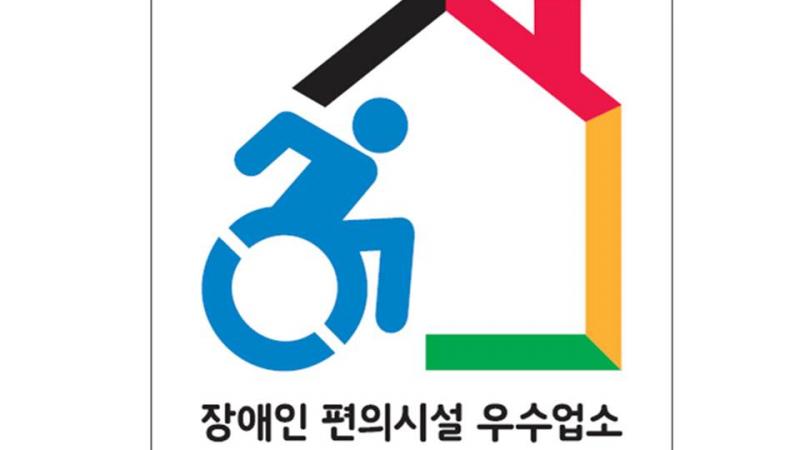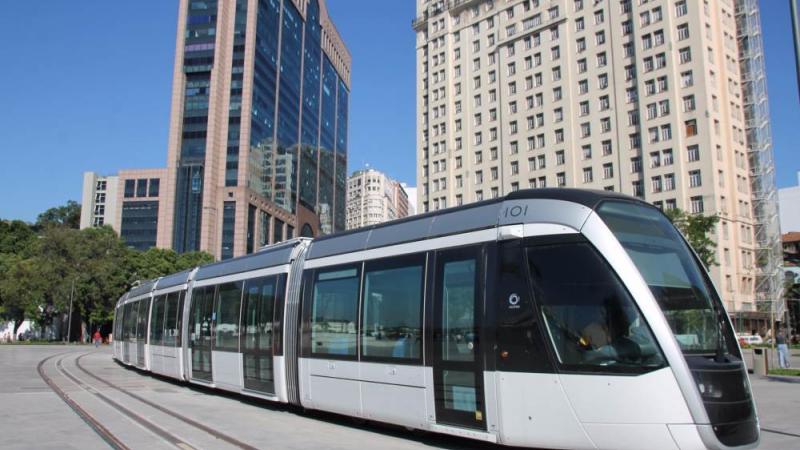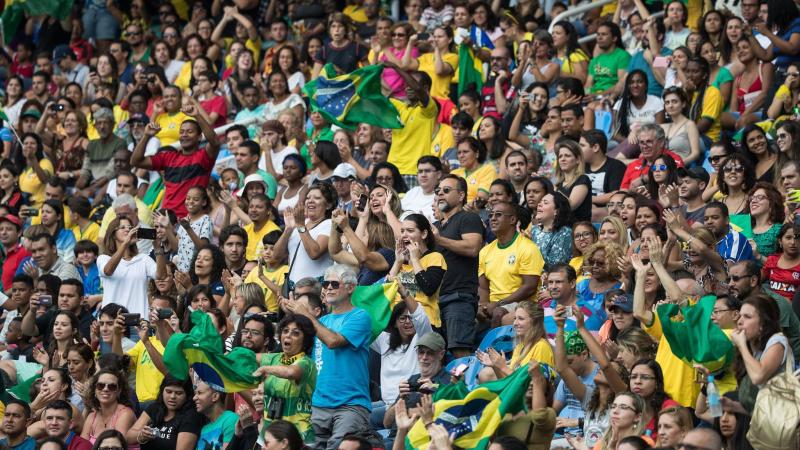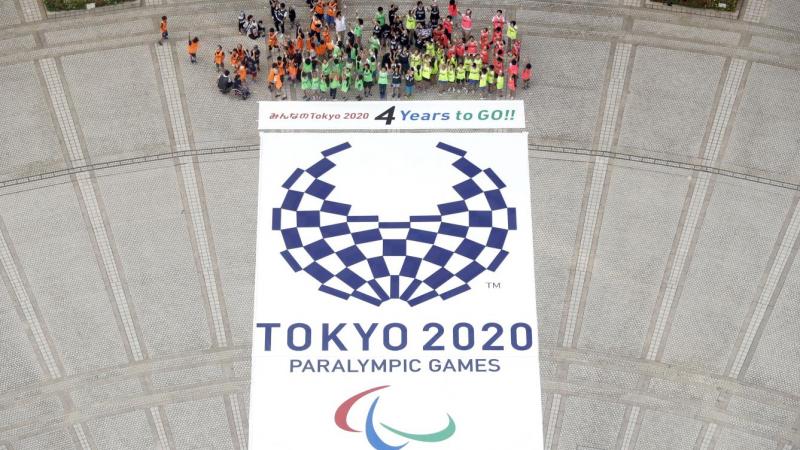#WePlayTogether: Changing perceptions, accessibility
As part of the celebrations for International Day of Sport for Development and Peace, the IPC looks back at the impact the Paralympic Games have had on communities. 06 Apr 2017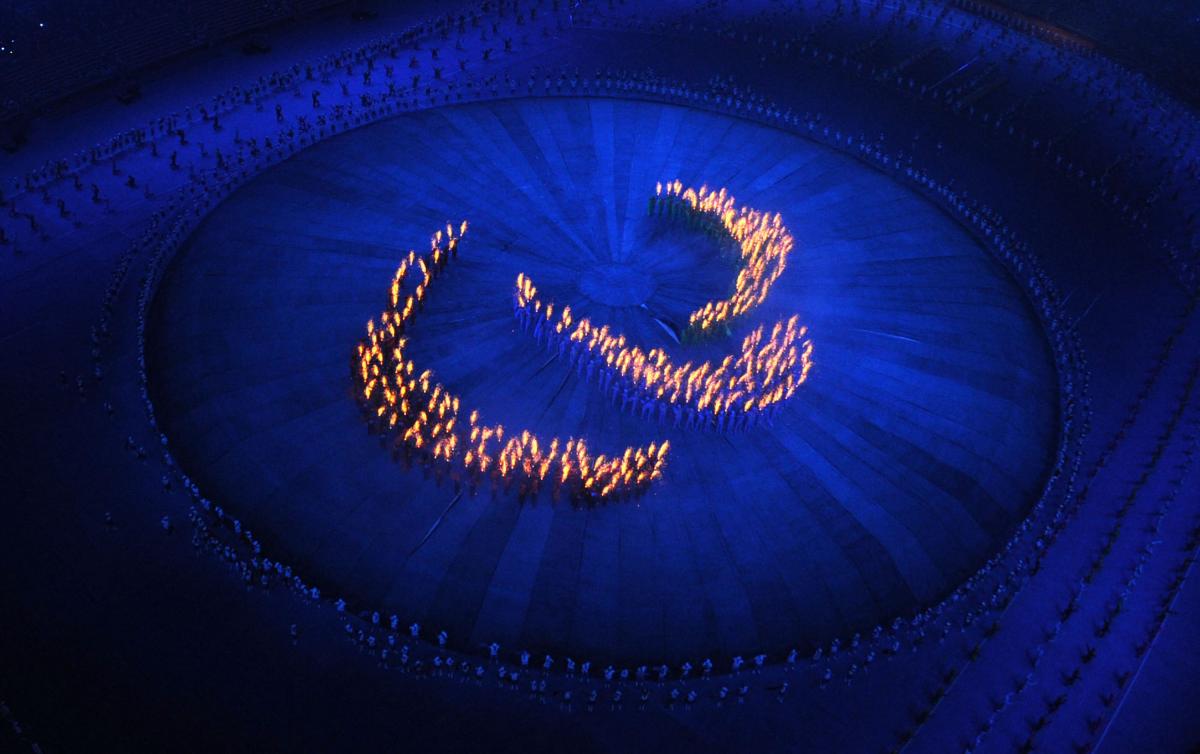
A live formation of the Paralympic Symbol during the Opening Ceremony of the Beijing 2008 Paralympic Games
“Since last year´s Paralympics, Rio improved a lot in terms of accessibility."
The Paralympic Games have become the world’s number one sporting event for driving social inclusion.
Their transformational impact reaches far beyond the track, field, pool and courts and into the lives of millions of citizens, with and without impairments, across the globe.
Bid cities have increasingly recognised the value of making facilities accessible for all. Whether you are a wheelchair user, an amputee, a person with a visual or intellectual impairment or even a parent with a pushchair, Games cities are now easier to get around for everyone.
Sustainable cities and communities have become one of the key legacies of hosting a Paralympic Games. Like the sporting action, accessibility makes a real and long lasting impact on peoples’ lives.
However, most Games organisers do not stop at making Games venues barrier free.
Beijing 2008
Beijing 2008 invested over EUR 124 million in over 14,000 accessible facilities. More was spent in the seven years running up to the Games on accessibility than the previous 20 years put together.
The Games brought legislation on the building of accessible facilities, which triggered massive accessibility construction campaigns in an increasing number of cities across China covering roads, transport, key public places and famous tourist spots.
Elevators and wheelchair ramps were installed at the most popular part of the Great Wall of China, and accessibility was also improved in the 600-year-old Forbidden City and Imperial Palace.
On 1 July 2008, the revised Law of the People’s Republic of China on the Protection of People with a Disability came into force, having been adopted by the National People’s Congress Standing Committee months earlier.
The law provided that state and society should take measures to improve accessible facilities and promote accessible information, in order to enable equal participation in social life for people with an impairment.
One small example was allowing guide dogs and their owners into public places. This is taken for granted in many counties, but was completely new for China.
China was also among the first signatories of the United Nations Convention on the Rights of Persons with Disabilities – the first international human rights treaty – that came into effect on 3 May 2008.
In addition to people having a greater knowledge and understanding of disability, the Games brought about positive changes for people with impairments who now enjoy a better social status; more public attention; public respect; improvement of social security; easier access to employment; better education opportunities and much, much more.
London 2012
Excellent facilities were left in the British capital where places were made far more accessible.
Previously the focus had been on the inside of the perimeter of the venues. In London, attention was given to a new concept called the “Last Mile” – ensuring that the immediate urban domain was also part of people’s experience.
The south bank of the Thames, hugely popular with tourists, is now accessible for all and the tube network was reconfigured in many places to allow for barrier free access.
Research has shown a significant change in perceptions of people with impairments as a result of London 2012. One in three UK adults changed their attitude towards people with an impairment, while two in three said the Paralympic Games changed the way people with an impairment are viewed in Great Britain.
Sochi 2014
For the 2014 Paralympic Winter Games in Russia, the city of Sochi was transformed.
Sochi is now a blueprint for the rest of Russia, with 200 cities already using what was created for the Games as a guide for furthering their own accessibility.
The accessibility map (www.kartadostupnosti.ru) is also unique interactive internet project launched by the Sochi 2014 Organising Committee with the support of the IPC.
It lists hundreds of venues in cities across Russia that are accessible, so that people can locate facilities where they can practice sport.
Rio 2016
Rio 2016 aimed to lead by example as well as following other Paralympics in making popular public areas and tourist attractions barrier free.
The Projeto Rotas Acessíveis (Accessible Routes Project) saw 4,000m² of accessible pavements and 5,831m² of concrete resurfacing undertaken at the entrances to 10 popular Rio locations.
Attractions that benefitted from nearly EUR 1 million of accessibility improvements, such as levelling of pavements, the installation of ramps and tactile flooring, included Sugarloaf Mountain, Corcovado (the mountain that hosts Christ the Redeemer) and Copacabana beach. Barra da Tijuca beach, Praça XV, Paço Imperial, Cinelândia, Jardim Botânico, Vista Chinesa and Mesa do Imperador were also transformed.
Young Brazilian table tennis player Danielle Rauen, who won gold at the recent Sao Paulo 2017 Youth Parapan American Games said. “Since last year´s Paralympics, Rio improved a lot in terms of accessibility. And I am sure it will continue improving thanks to Sao Paulo 2017. People´s perceptions towards people with impairment are definitely changing in Brazil!”
The Inclusion of People with Disabilities Act eliminated accessibility barriers in transport, housing, services, education, sport and the exercise of citizenship. The law also stated that 2.7 per cent of the gross revenues of the federal lotteries should be invested in sport, up from the previous level of 2 per cent.
Organised as part of the International Paralympic Committee Academy Campus (in partnership with the World Academy of Sport), an Inclusion Summit in Rio also provided the ultimate forum to bring together business leaders, governments and the Paralympic Movement. Together they discussed inclusion and accessibility, their impact on society, and how the Paralympic Games have developed into the world’s number one sporting event for driving social inclusion.
The future: PyeongChang 2018 and Tokyo 2020
The PyeongChang Organising Committee for the 2018 Olympic and Paralympic Winter Games (POCOG) is making efforts to enhance accessibility in the host and venue cities by launching an ‘Accessibility Recognition Programme.’
Through the Accessibility Recognition Programme, POCOG aims to increase the number of restaurants and buildings that are easily accessible for pregnant, elderly or people with a physical impairment, by encouraging business owners and operators to install necessary furniture, fixtures and equipment. These are assessed and given a badge to indicate they meet the requirements.
POCOG also developed its own signature ‘Accessibility Manual’ in order to maximise the accessibility of the PyeongChang 2018 Olympic and Paralympic Games.
With three years to go until the Tokyo 2020 Paralympics, the Organising Committee has created its own Accessibility Guidelines with the help of the International Paralympic Committee, government organisations, the Tokyo Metropolitan Government, relevant municipal authorities and disability groups. These will ensure that all venues, facilities, infrastructure and services provided for the Games are accessible and inclusive for all.
The Japanese government has also approved the Universal Design 2020 Action Plan, which will see them redouble efforts to promote universal design for an inclusive society that is comfortable and accessible to everyone regardless of age, nationality and ability ahead of the Tokyo 2020 Paralympic Games.
To celebrate the International Day of Sport for Development and Peace on 6 April, the International Paralympic Committee is publishing a series of articles about how Para sport and Para athletes are contributing towards sustainability and peace all over the world.
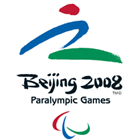
 Facebook
Facebook
 Instagram
Instagram
 Twitter
Twitter
 Youtube
Youtube
 TikTok
TikTok
 Newsletter Subscribe
Newsletter Subscribe






